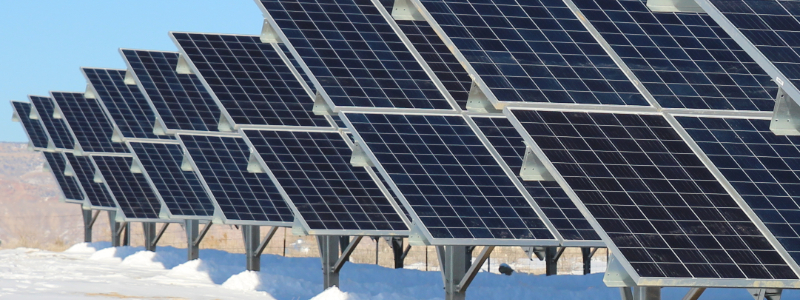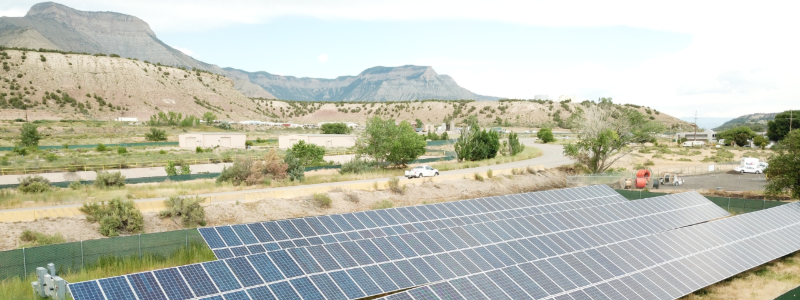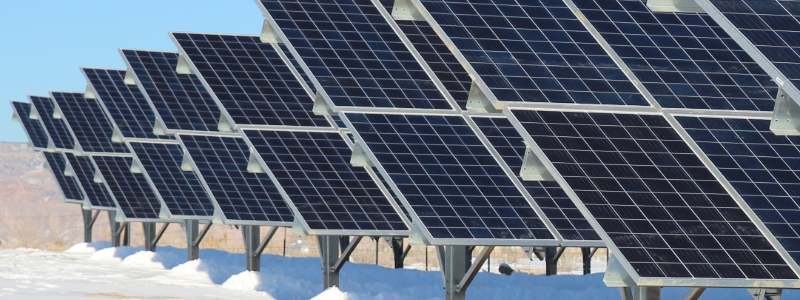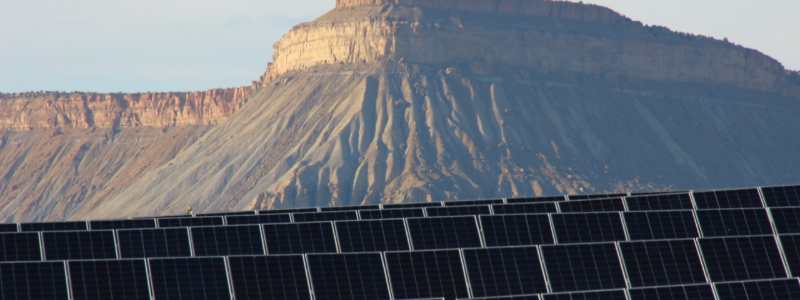Benefits of Community Solar
October 3, 2019

Community solar has arrived – and it is delivering real benefits today. Across the country, individuals and families, renters and homeowners, and local municipalities, small businesses, churches, schools, and other key community institutions are:
- Supporting renewable energy, reducing emissions, and accelerating the transition away from fossil fuels
- Creating local power projects that increase regional grid resiliency
- Saving money on energy bills each month, with no up-front investment
As more and more states and utilities adopt community solar, the community solar industry has blossomed from a few innovative “pilot” projects into full-fledged state-wide programs across the country. Now, thousands of community solar projects are operational or in development, supported by major utilities, and regulated by states or Public Utilities Commissions (PUCs) to consistently deliver the benefits of solar to individuals and communities that on-site solar and other renewable energy projects were not able to serve.

Pivot’s team is comprised of community solar pioneers. When we started working in community solar, we quickly learned how much consumer demand there was to support renewable energy. At the same time, many of the same people who actively supported solar did not know where to begin the process themselves. This was especially true if they were in the vast majority of consumers who could not “go solar” themselves with a rooftop system.
Rooftop solar is a great option for the people that can utilize it, but many residents and businesses cannot. Community solar serves anyone who cannot benefit from rooftop solar, making it a great option for renters, apartment dwellers, homeowners, or businesses without the right kind of roof.
In the early days of shared solar, many prospects thought community solar sounded “too good to be true.” However, community solar does deliver significant long-term monetary and environmental benefits to subscribers and local communities because of mutual commitment. Developers work closely with towns and cities to design the projects; utilities make sure the projects come online and are credited correctly for the benefits they deliver; subscribers agree to pay for the electricity produced by the solar project. That mutual commitment provides the broad support that gets community solar projects built and supports their operations over time. It works because everyone involved does their part.
Solar Is Becoming Mainstream
Solar and wind have put renewable energy firmly in the mainstream. Costs continue to come down, the technology has improved dramatically, and the sight of solar panels or wind turbines is no longer a novelty. Instead, it is a sign of individuals and businesses taking charge of their energy future and saving money in the process. The world’s largest corporations are making huge, voluntary long-term commitments to renewable energy. By doing so, they are acknowledging that solar is the right thing to do and it benefits the bottom line.
Community solar is a way for consumers and businesses to participate directly in this energy revolution while supporting projects in their local community. Community solar allows groups of like-minded individuals and business owners to subscribe to a local solar project, support renewable energy, reduce emissions, and save money. Additionally, community solar subscriptions typically do not require up-front payments and are flexible enough to move with the subscriber to another property or meter. Community solar works to make sure that everyone shares in the benefits of renewable energy.
Community Solar is Intentionally Simple
One of the goals of community solar is to be simple, but a lot needs to happen for any good program to function smoothly. Community solar programs have evolved from scrappy, local projects to fully-fledged programs administered by utilities, state regulators and hands-on project owners who are all dedicated to making sure that the program functions smoothly.

The first piece of the puzzle is the community solar project developer. Any consumer interested in community solar should make sure they are working with a project developer who has a demonstrated track record of getting good projects developed and working closely with their local community.
The utility is the second piece playing a key role. As more and more consumers demand renewable energy options, and as recognition for renewable energy as for grid resiliency grows, utilities are building the processes and systems to support this evolution. One of the first steps of any community solar program is to make sure the utilities are prepared to meter, value, and credit the generation of projects across their territory.
The final and third piece is the regulators that stay involved across the process. They play an important role in program design, but they also establish and monitor consumer protection and program compliance, to make sure that community solar continues to benefit those who need it the most – consumers.
By the time any community solar project has been energized, a lot of work has happened behind the scenes to deliver benefits to hundreds of local energy users, efficiently, and consistently.
Community Solar Benefits Everyone
To sum it up, community shared solar is truly designed to share the benefits of renewable energy across an entire community.

Residential subscribers, businesses, and other community institutions benefit from:
- Savings: subscribers’ commitments provide the support to get the project built (with no up-front payment), and in return, they receive credits on their utility bills. The credit is oftentimes higher than the subscription rate and the sum of the two results in savings. It is like getting a $100 gift card each month for $90.
- Access: eligibility to community solar is not limited to those who can own the equipment – in particular, renters or students or those in housing communities can all participate in a project, support renewable energy and save money.
- Flexibility: there are no panels to install, no changes to utility connections, no interruptions or changes to electric service – and when life events happen (like moves), subscribers can easily transfer their subscription to their new home (if they stay local) or they can most often cancel their subscription with notice.
At the same time, local communities benefit from:
- Local, renewable energy sources: communities are not only taking charge of their local energy needs; they are also doing so in a way that replaces fossil fuel-burning generation, delivering cleaner air, lowering regional emissions and supporting sustainability.
- Investments in the local economy: community solar gardens are significant investments (often multi-million-dollar projects) that directly benefit local economies through well-paying local jobs, long-term local tax revenues and lease payments to support farmers and other landowners.
- Access for the entire community, including traditionally under-served customers: taking solar beyond individual rooftops is only the first step, as community solar programs are often designed to make sure that solar benefits the whole community, including families that traditionally have not had easy access to affordable clean energy.
The Pivot Energy team is excited to play a key role in delivering the many benefits of community solar, and we are always happy to answer any questions you may have – either about subscribing to a project, hosting a site, or seeing a community solar garden developed in your community. Please do not hesitate to reach out with any questions.

.jpg?width=123&name=Angie%20Agrivoltaics%20Award%20(HQ).jpg)


.jpg?width=400&name=Angie%20Agrivoltaics%20Award%20(HQ).jpg)
